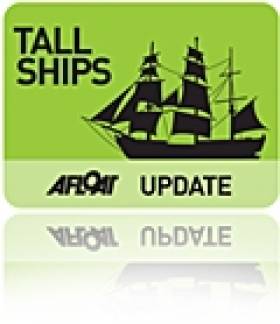Displaying items by tag: Tallship Value Sinks
Jeanie Johnston Replica Famine Tallship Sinks in Value
#JeanieJohnston - The Irish Times reports that the replica famine tallship, Jeanie Johnston which cost €15 million to build, has sunk in value to €700,000, according to Dublin City Council.
The ship is part of €8 million in cash and assets expected to transfer to the council as previously reported on Afloat.ie once the Dublin Docklands Development Authority is abolished later this year.
The authority bought the ship in 2005 for €2.7 million from Kerry County Council and other shareholders including food company Kerry Group, Shannon Development Company and Tralee Town Council.
The ship, modelled on a 19th century emigrant ship, was commissioned in the late 1990s for £4.5 million. By the time of its completion in 2002, its cost had spiralled to almost €15.5 million, €13 million of which was State funded.
For more on this story about the tall-ship, click HERE.






























































